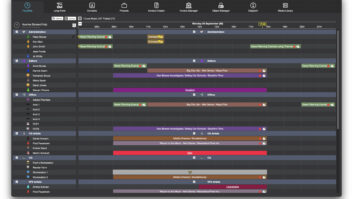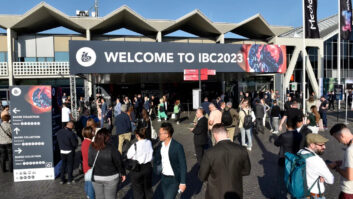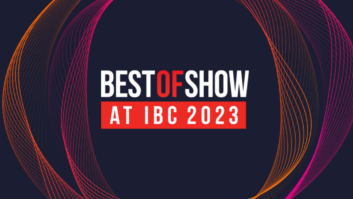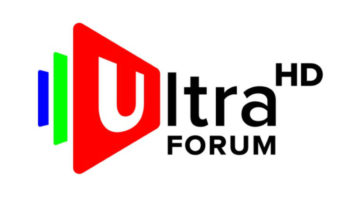As the dust settles on IBC 2023, TVBEurope hears from a number of exhibitors on their view of this year’s show.
Matthew Williams-Neale, VP marketing, Appear
In terms of stand presence, visitor numbers, and quality of conversations, IBC 2023 was our biggest show yet. We had 700+ visitors from 65+ countries representing 550+ companies. The feedback from our visitors about our stand design and hospitality at our sports bar-style experience was incredibly positive and helped create a relaxed and welcoming environment for all who engaged with us. The show generally also felt much busier than last year, indicating an optimistic outlook for the industry and a growing appetite to connect in person.
Sustainability was a hot topic of conversation at IBC 2023 – but the industry needs to continue to do far more. As technology vendors, we must all address the roles we can play and work closely with media companies to tackle the challenge of building a more sustainable future head-on in everything we do. During the show, it quickly became apparent which companies were serious about creating sustainable solutions and if they could substantiate their claims. It seems clear that sustainability will continue to be a major focus at future trade shows, and we’re looking forward to sharing how we will continually advance our portfolio and culture around this vital topic.
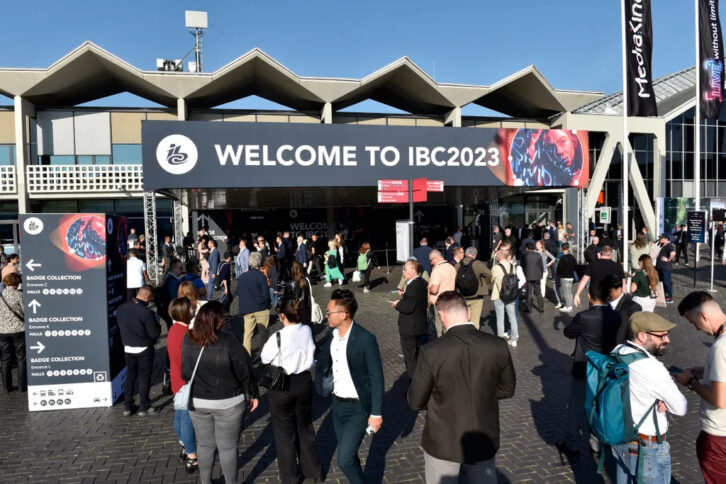
Kjetil Horneland, CEO, Ease Live
At IBC, it was interesting to see how cloud production technologies have expanded the realm of user interaction beyond the primary live stream, enabling viewers to engage with a broader spectrum of content. The industry is actively seeking ways to deploy such services across web, mobile, and connected devices and to reach their entire audience without imposing substantial upfront costs or lengthy time-to-market delays.
Also, if you look beyond the discussions around expensive content rights and consolidation in the market, it’s clear that many OTT platforms are finding themselves grappling with the task of recouping their investments within a highly competitive marketplace. They understand that powerful interactive experiences are pivotal to increasing fan engagement, building loyalty, driving greater participation, and acting as a powerful catalyst for growth.
Finally, I noted that several customers and partners are targeting advancements in advertisement formats to simplify the delivery of targeted programmatic ads and sponsorship “on top of the stream” when their traditional inventory has sold out. This is providing food for thought for many global sports leagues, particularly as they look for long-term strategies in structuring interactive content (the partnership of La Liga and Play Anywhere is just one recent example).
Sally Winship Comollo, director, communications, Edgio
IBC 2023 was a great show for us and a fantastic opportunity to meet with our European and global customer community. One of the biggest talking points was around trying to do more with less – driving profitability and reducing complexity were top of the agenda for many major media organisations at the show.
Streaming at scale is becoming increasingly demanding and complex. Media companies are looking for a simple way to tie together the multiple fragmented solutions required to form a complete streaming tech stack. Whether you have top quality content and an audience, but need a full streaming workflow – or whether you already have several existing elements of the tech stack – bringing this ecosystem together can be a confusing, expensive, and painstaking process. As a result, we’re seeing growing interest in the managed service approach with pre-integrated partners that provides customers one central point of contact and a quick route to market.
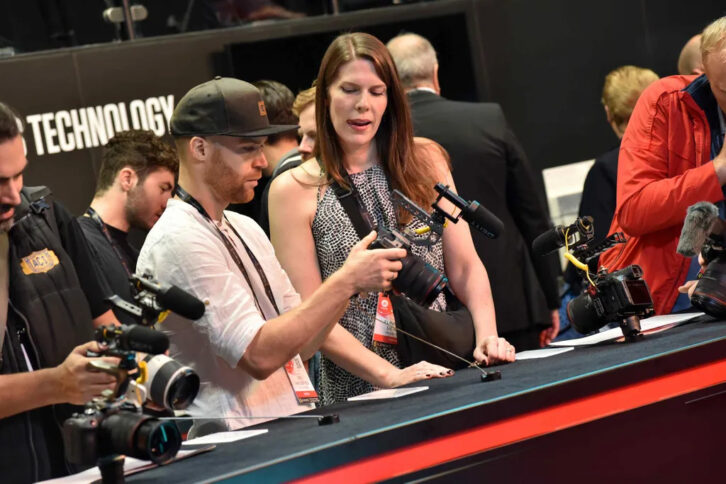
Customers are looking for flexibility. They want easy access to a flexible, pre-integrated ecosystem that allows them to create a full chain streaming solution while simplifying disparate workflows. Right now, media businesses don’t have the time or headspace to think about managing multiple vendor relationships and complex technology integrations – they want to focus on creativity, content, and subscriber growth.
Vijay Sajja, CEO, Evergent
Maximising monetisation while reducing costs was a massive talking point at IBC 2023. Facing economic headwinds, media organisations have a huge focus on driving subscription revenues while experimenting with new business models at multiple cost points. Post-pandemic, previously rapid streaming subscriber growth is slowing down, so content providers are looking for new ways to retain and grow their audiences to secure profitability.
Churn was the top challenge we discussed with media customers at the show. Whether tackling involuntary churn, (e.g. when a subscriber’s card payment is declined), or voluntary churn (e.g. choosing to cancel a service), streaming companies need a multi-faceted approach. Even making small improvements across a number of these areas can deliver a significant uptick in revenues. Having dedicated, specialist technology with all the right partners, payment platform integrations and local market customisations will deliver tremendous results.
Minimising churn and keeping hold of your customers is paramount – leading media brands are quickly realising they need a lot of high quality data and a full suite of specialist tools to help them achieve that.
Blair Harrison, CEO and founder, Frequency
Let’s start with the positives. Media companies came to IBC looking to thoughtfully invest in new technologies and platforms that automate their services and reduce operational costs. The selection of technology suppliers exhibiting on the show floor was much more nuanced, but some of the smaller players – who helped get trends such as FAST channels off the ground a few years ago – were not as active. It is clear that customers are seeking premium-grade solutions that bring reliability and technological maturity.
Let’s be frank – there is a lot of caution across the industry. As SVoD stagnates, traditional TV declines, and cloud economics continue to disrupt traditional value chains, we will see sales cycles continue to lengthen, and I think the next three quarters will prove very challenging. Everyone is trying to find value wherever they can.
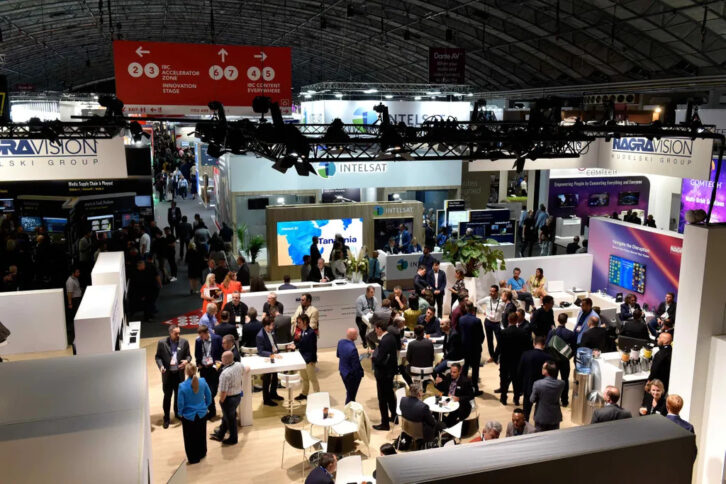
I’m optimistic there will be a substantial improvement in the second half of 2024. As the lines between traditional TV and FAST continue to blur, there is a great opportunity for companies like Frequency to invest now in advance of market maturity. While many of our customers are focused on cutting costs – largely by replacing their traditional TV infrastructure for non-critical channels and services with cloud-based tools – they are also actively seeking ways to monetise and maximise the value of their deep-pocketed content libraries. It means FAST channels are back on their radar once again.
Rick Young, SVP, head of global products, LTN
IBC 2023 was another huge success for LTN and the industry. It was great to get together to discuss the most significant trends that are shaping the future of media technology.
LTN had plenty of conversations with customers and other attendees that focused on moving to more scalable solutions underpinned by IP-based video transport. Video transmission solutions today must be robust and flexible enough to support a modern, multi-platform global distribution model. In 2023, media companies both in EMEA and elsewhere are quickly realising that transitioning to IP makes sense from both a business and technology perspective.
IP-based video transport is enabling organisations to push new boundaries in content distribution and unlock greater flexibility, scale, and monetization that will help them thrive today and in the long term. It was tremendous to see the determination from many media companies to futureproof their business with IP-first solutions such as LTN Wave and LTN Arc, both of which were central to our discussions at the show.
LTN will continue to enhance and evolve its product portfolio over the coming months. Our 2024 innovation roadmap looks more exciting than ever.
Carl Furgusson, head of portfolio development, MediaKind
The discussion around greater monetisation with advertising has reached new heights, with a focus that extends beyond traditional Direct Advertising Insertion (DAI) in streaming. Broadcasters are now delving into innovative strategies to extract more value from their advertising slots and also to leverage streaming to increase inventory through additional content. One prominent approach is regionalisation of advertising in linear, allowing advertisers to target specific geographic markets with tailored content. Additionally, ad replacement technology is gaining traction, enabling broadcasters to switch out ads in real-time, optimising revenue and viewer engagement.
Artificial Intelligence is experiencing a shift from hype to practicality within the broadcasting industry. Unlike the buzz that surrounded AI in the past, today’s focus is on real-world applications that solve tangible problems. AI is being deployed to improve operational efficiency and enhance the viewer experience. Applications range from content recommendation systems that personalize content delivery to automated tagging and AI-driven ad targeting, helping media companies maximize the impact of their content and advertising.
Venugopal Iyengar, COO, digital, Planetcast
For the Planetcast team, IBC has become one of the most important annual touchstones with the global broadcast industry. It’s impossible to overstate the value of connecting face-to-face with our customers and with the industry’s leading commentators.
IBC provides an opportunity to get in touch with the European market. Our customers from different regions all have different needs to serve their market, and keeping in touch with the individual needs of our customers from all over the globe is one of our key priorities. With our long heritage in live sports, we were particularly interested to see how sports delivery and consumption have evolved in the region. Beyond sports, a wider trend industry we’ve been tracking is the consistent focus on cloud-led innovation; this year’s IBC reaffirms the cloud as the broadcast industry’s defining technology for years to come.
Kevin O’Meara, VP of marketing, The Switch
Sustainability was a big topic of conversation at IBC this year and I was asked more than once for my views on how companies involved in live production could “do better”. It’s a fair question, but it does raise a difficult point. Why are there less remote live productions today than there were a couple of years ago? Covid is the obvious answer. But the question still stands: having proved that REMI/remote (whatever your favourite term is, just not “At Home” please) works, why are there less remote productions now and why are many organisations moving back to rolling OB’s on-sight to produce games? It’s a genuine question. If sustainability is one of the key topics that companies are supporting and getting behind, why are their actions not reflecting that?
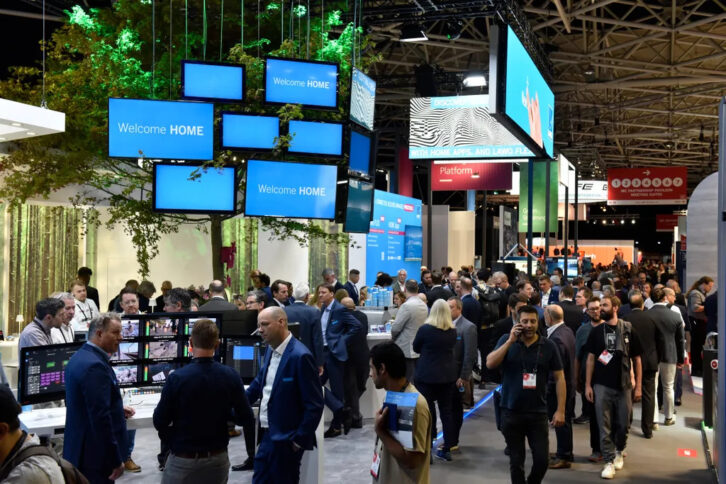
Mark Fisher, VP of marketing and business development, Qwilt
Consolidation has been a big theme in the broadcast world over the last few years, so much so that in the US, six big companies control an estimated 90 per cent of the US media marketplace. With the reach of IP extending past the traditional limitations of broadcast spectrum and operator licences, the consolidation is now global for many of these big brands. The key driver for this outreach is a desire for these brands to remain relevant and increase scale to compete with streamers like Apple, Amazon and Netflix.
Yet consolidation is not just on the content publisher side. IBC saw an explosion of new exhibitors at the end of the last decade with 2018 hosting around 1700 exhibitors compared to the 1250 that IBC reported this year. This is not to say that the event was any less important or vibrant, in many ways, this was one of the best. However, it is notable how many optimistic start-ups have either been acquired or fallen by the wayside in a market where previously conservative suppliers have ramped up investment in areas like cloud and of course the move to software over hardware-based solutions.
Consolidation on both sides has a beneficial knock-on effect and especially in the content distribution business. In areas like service interoperability and emerging technology such as open edge caching, these new behemoths are effectively setting industry standards and direction that is making it easier to gain a critical mass for innovative ideas.
